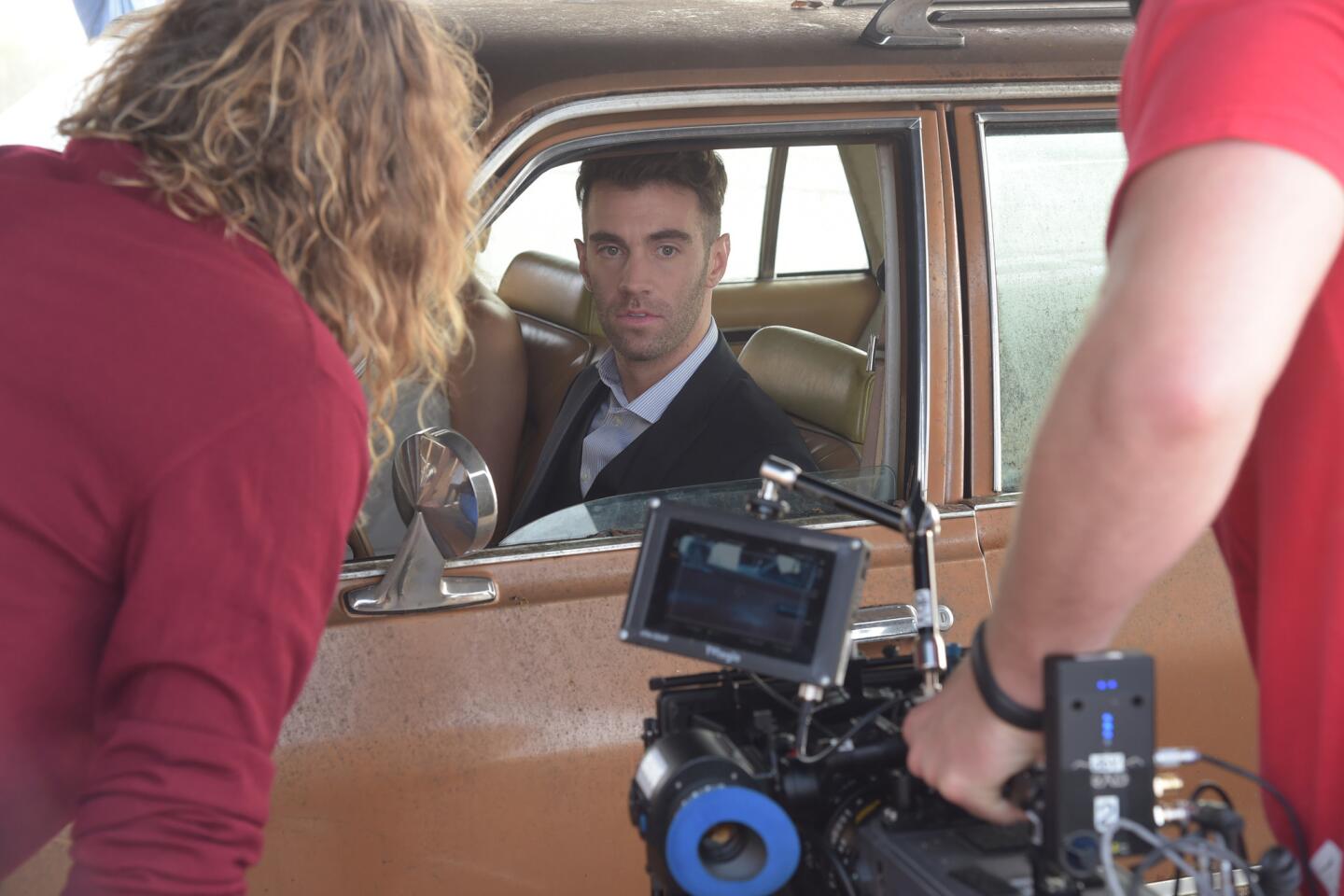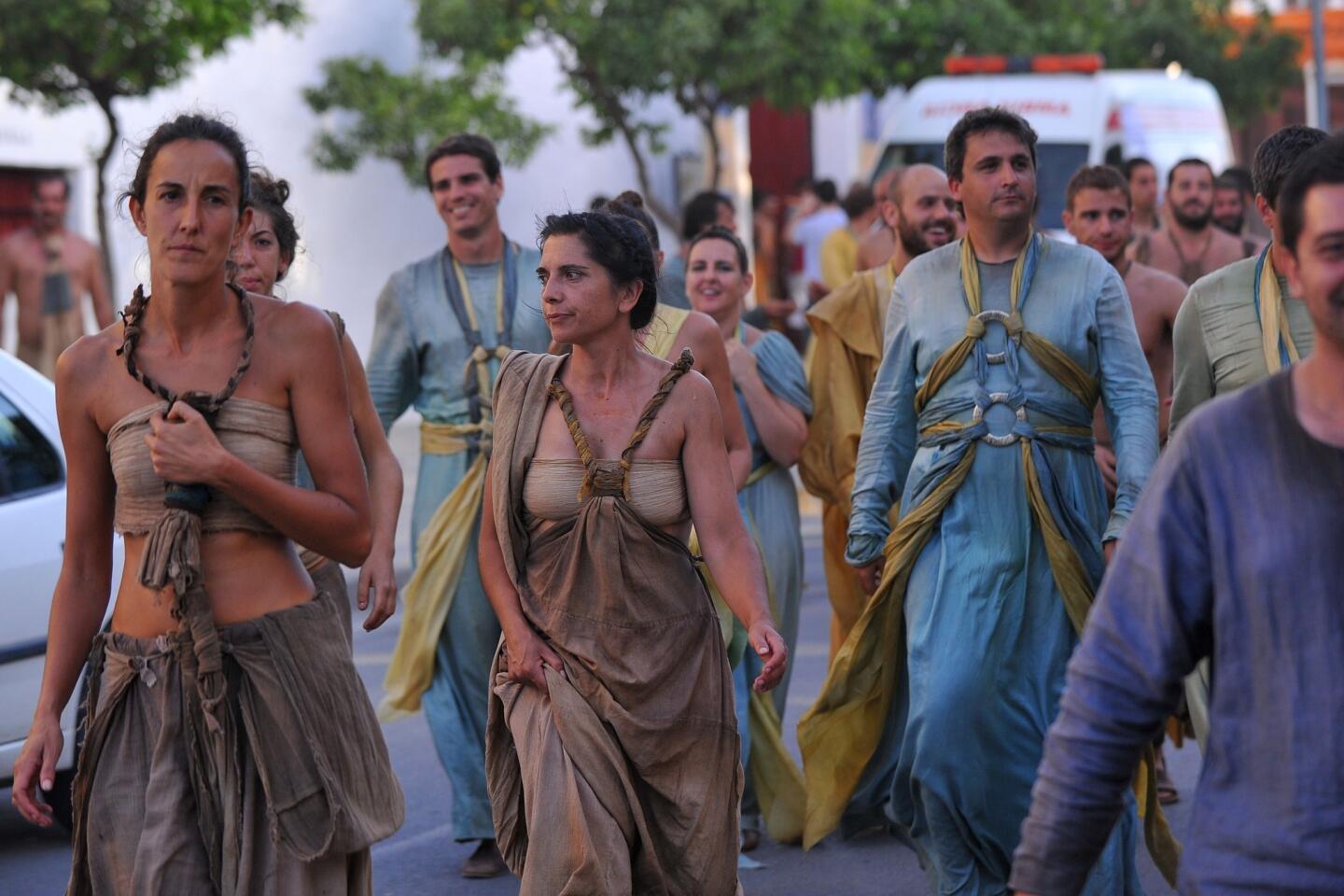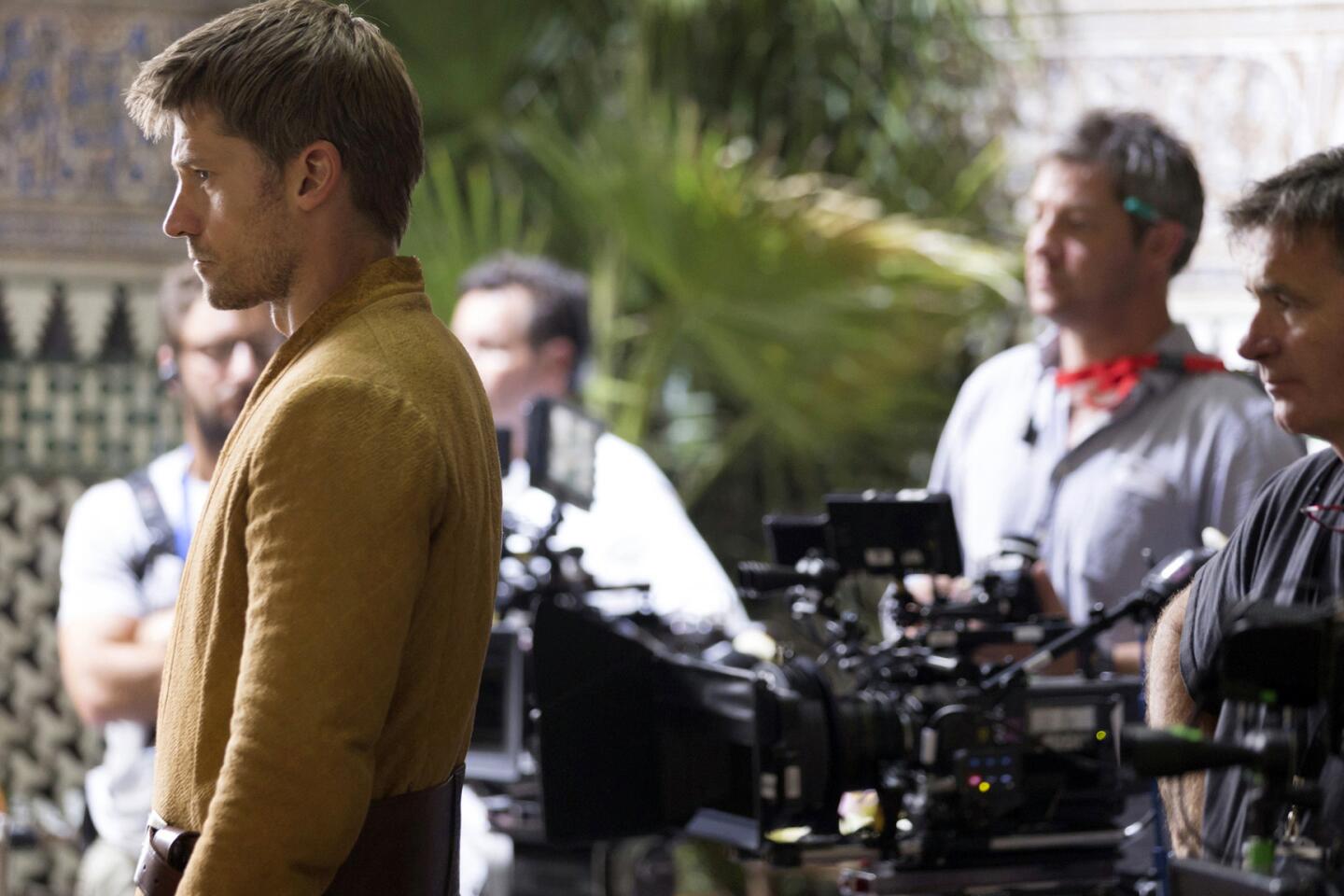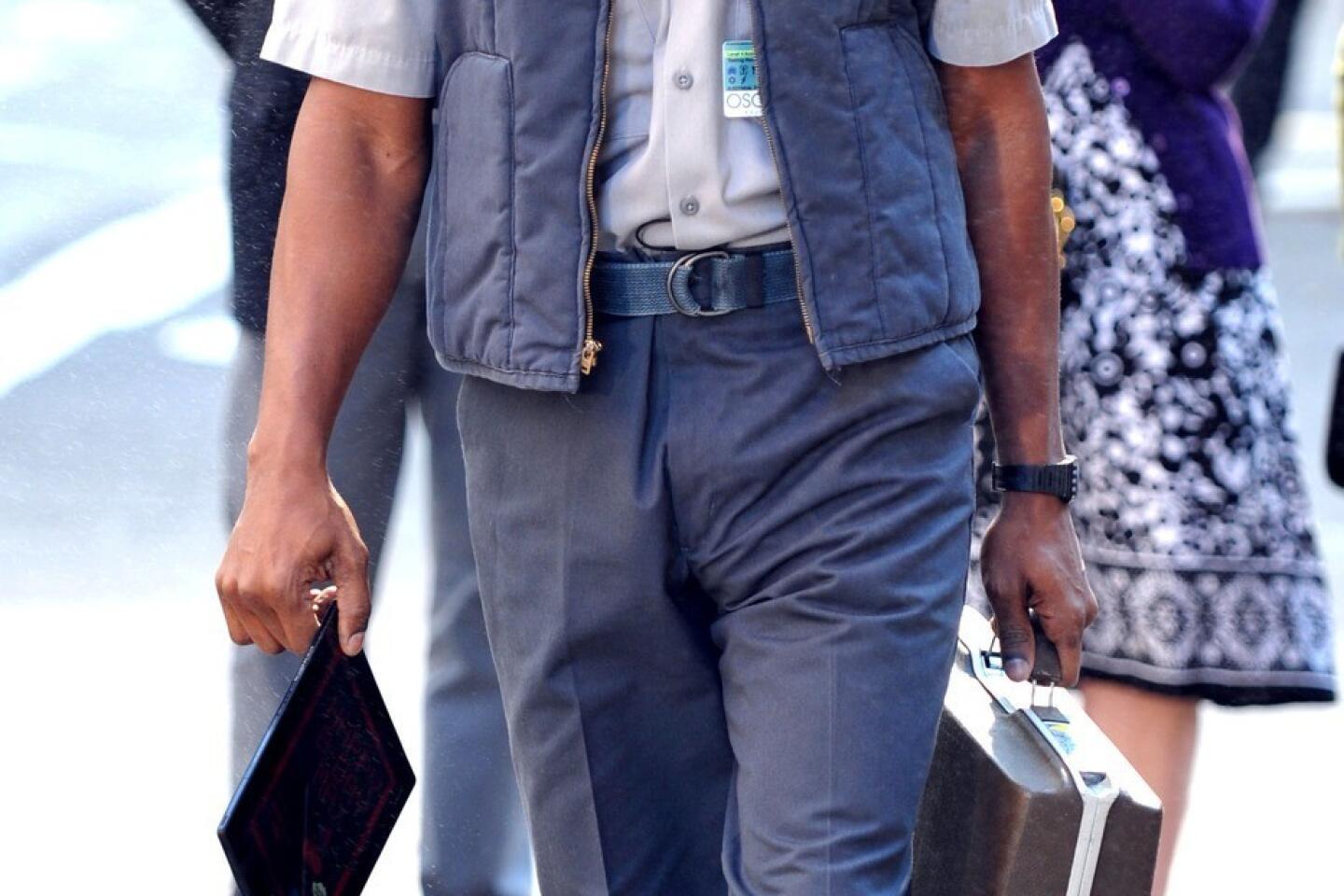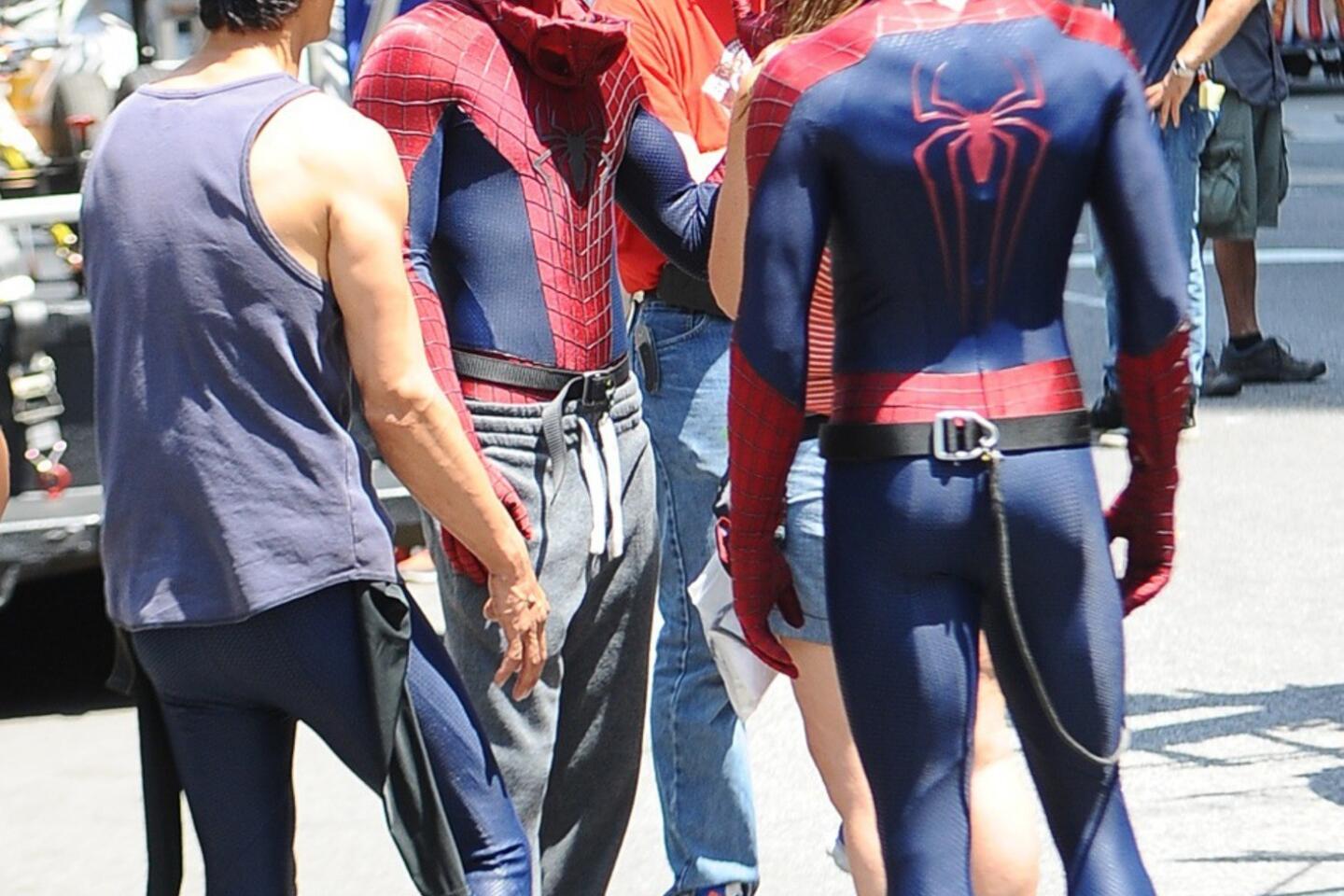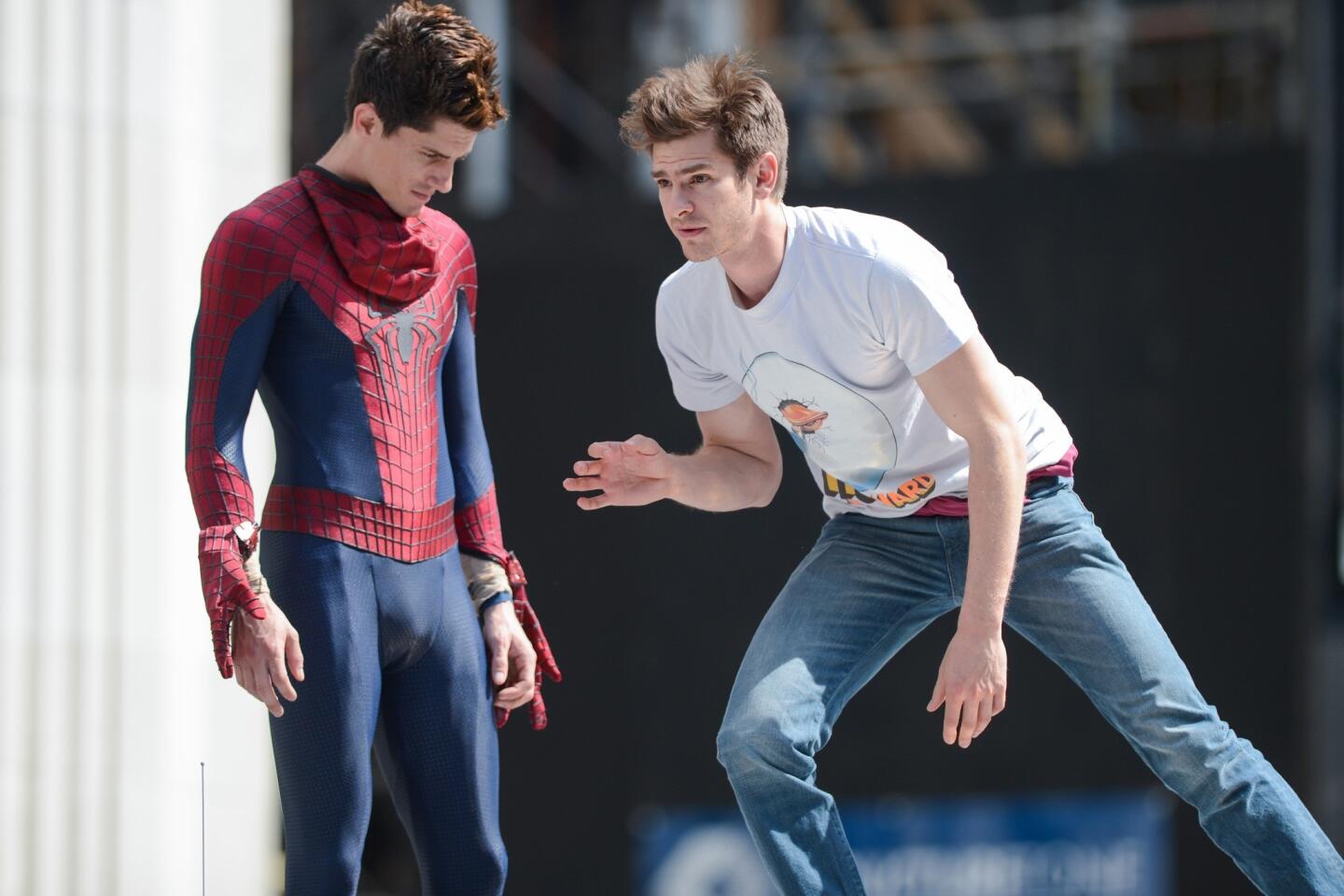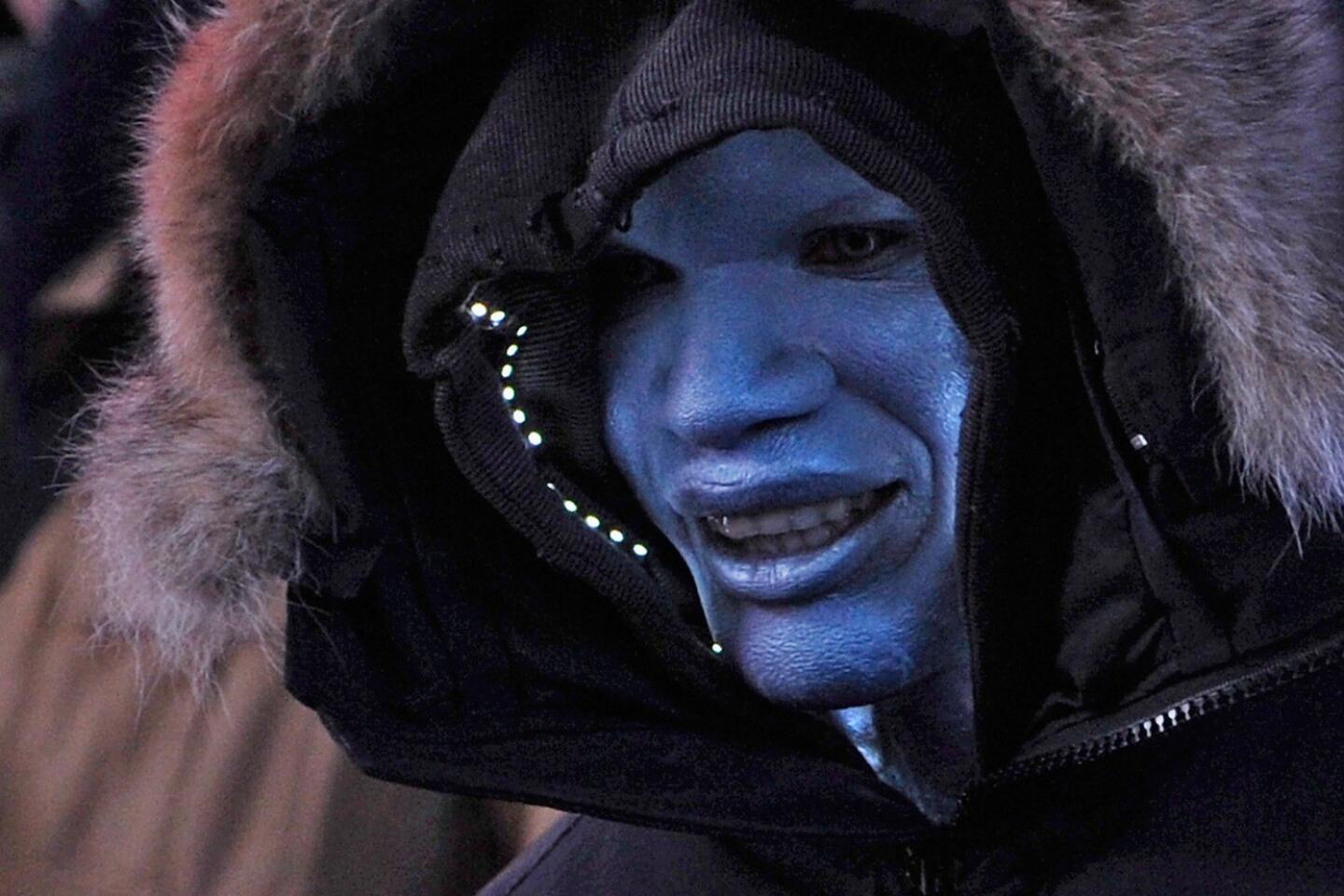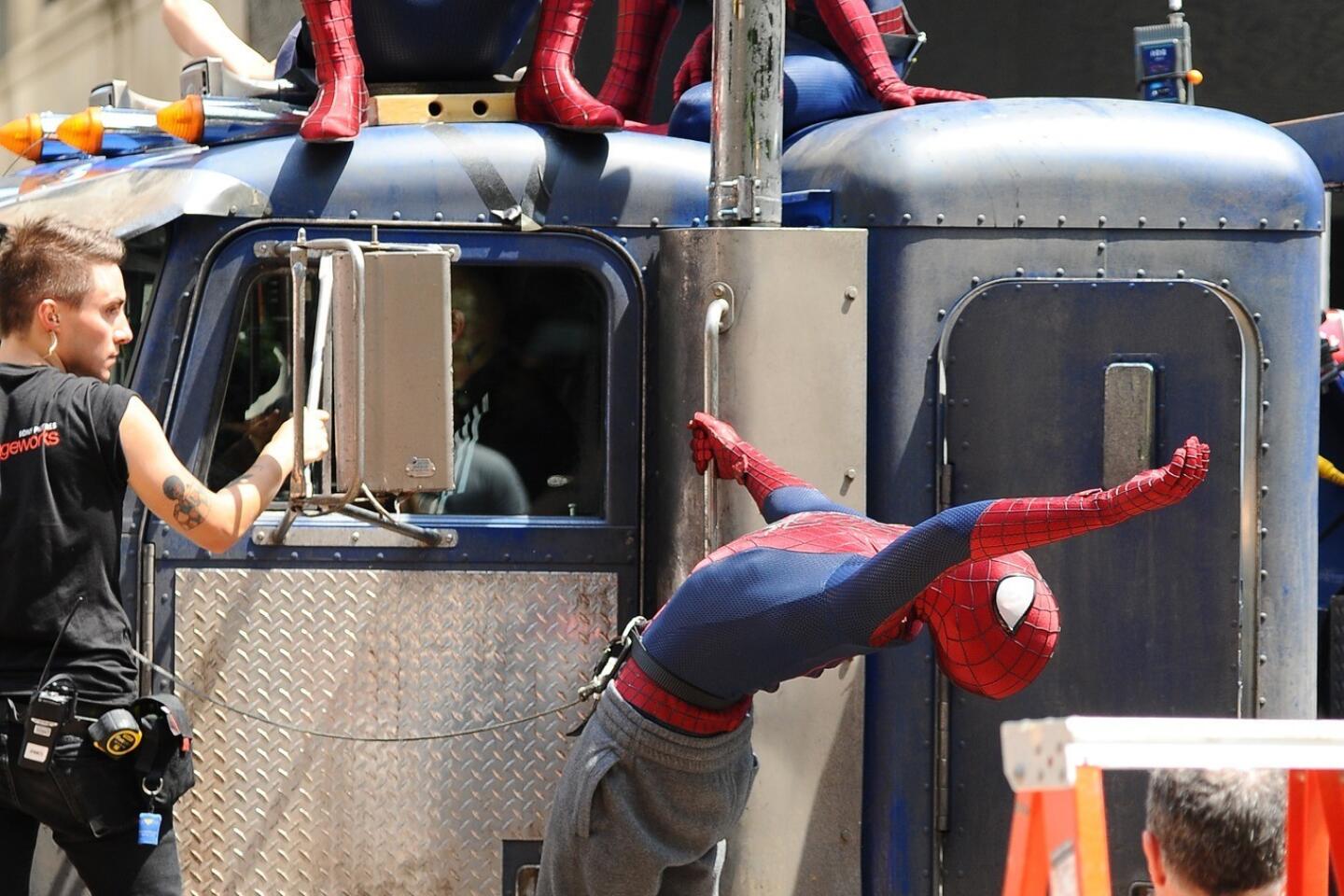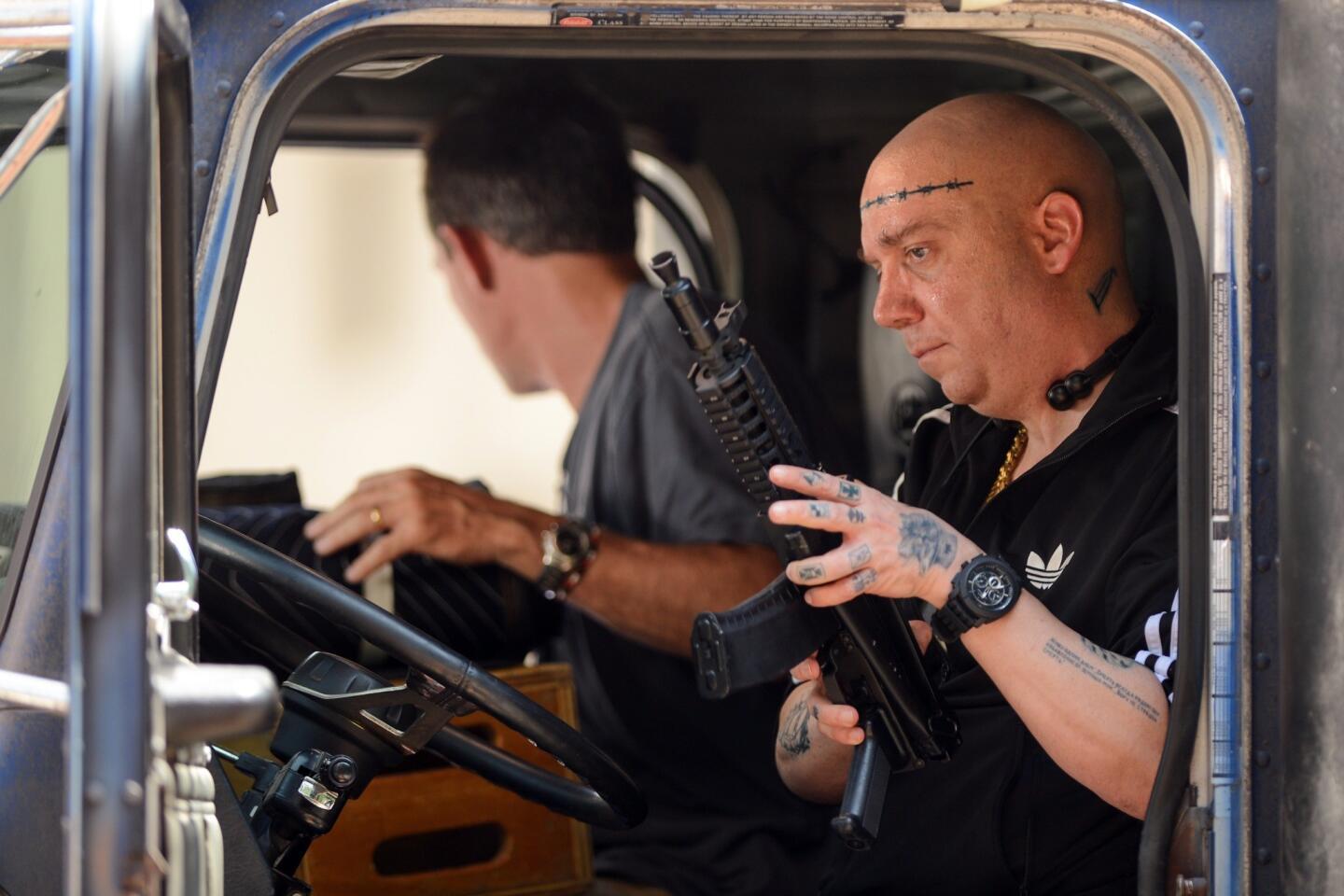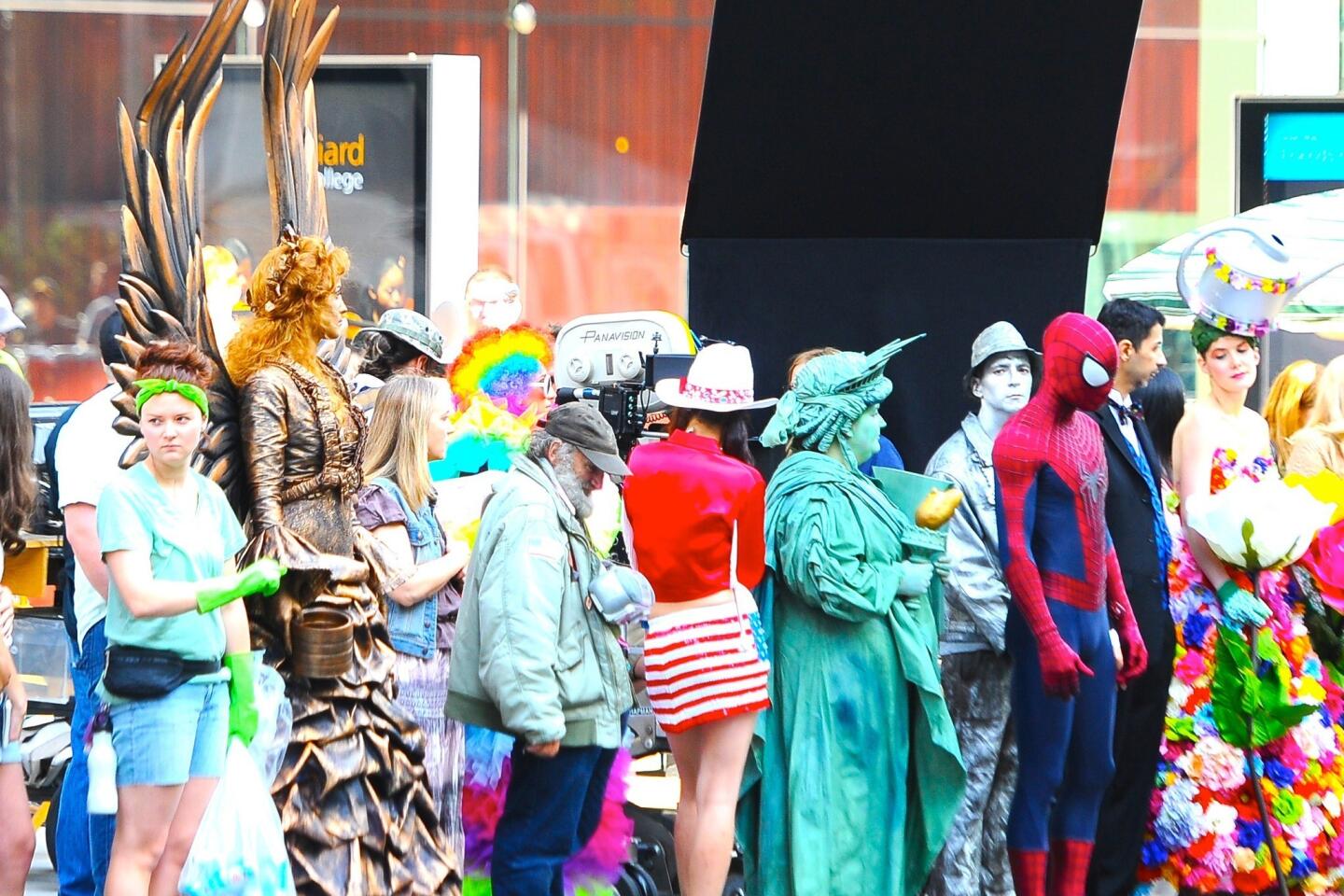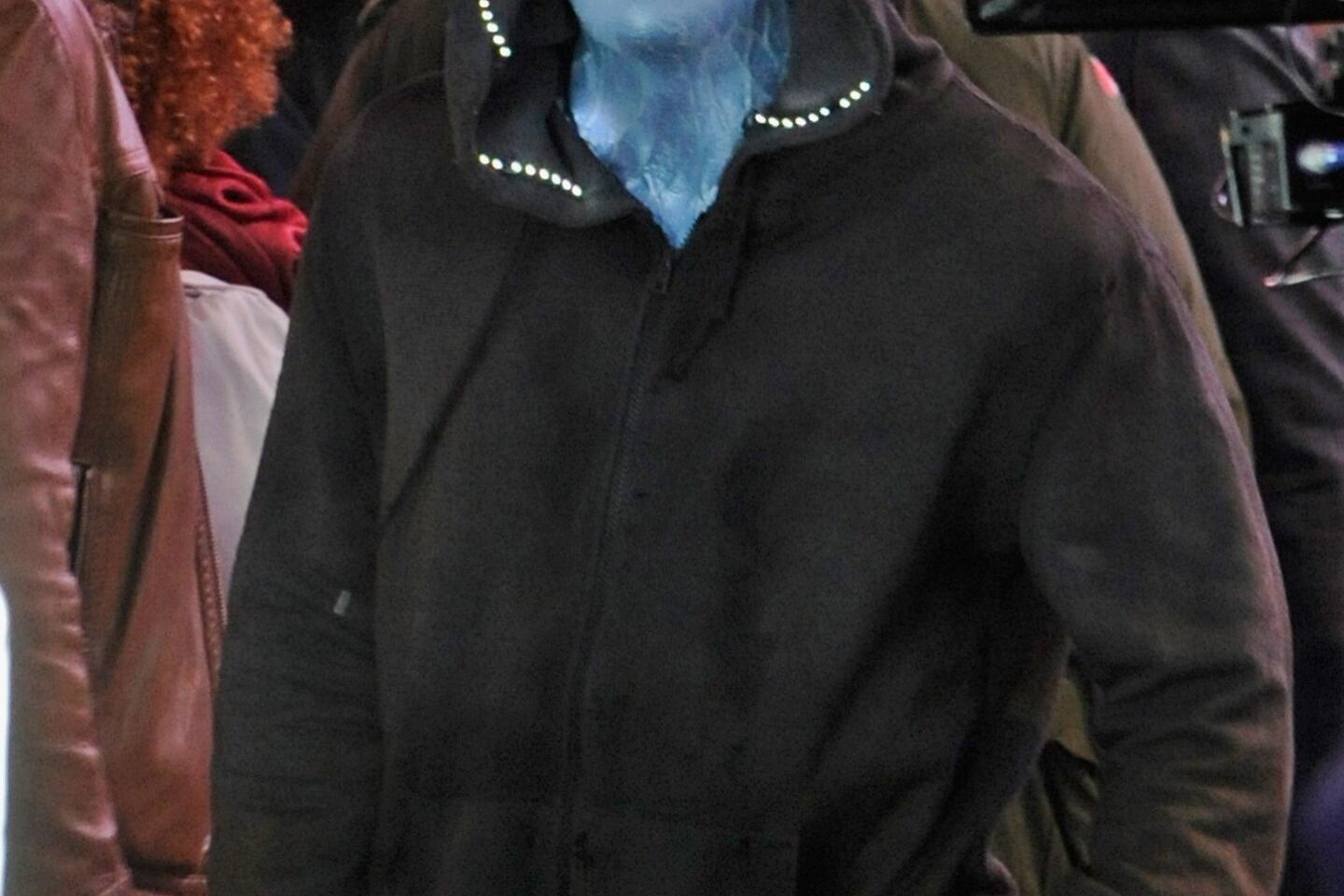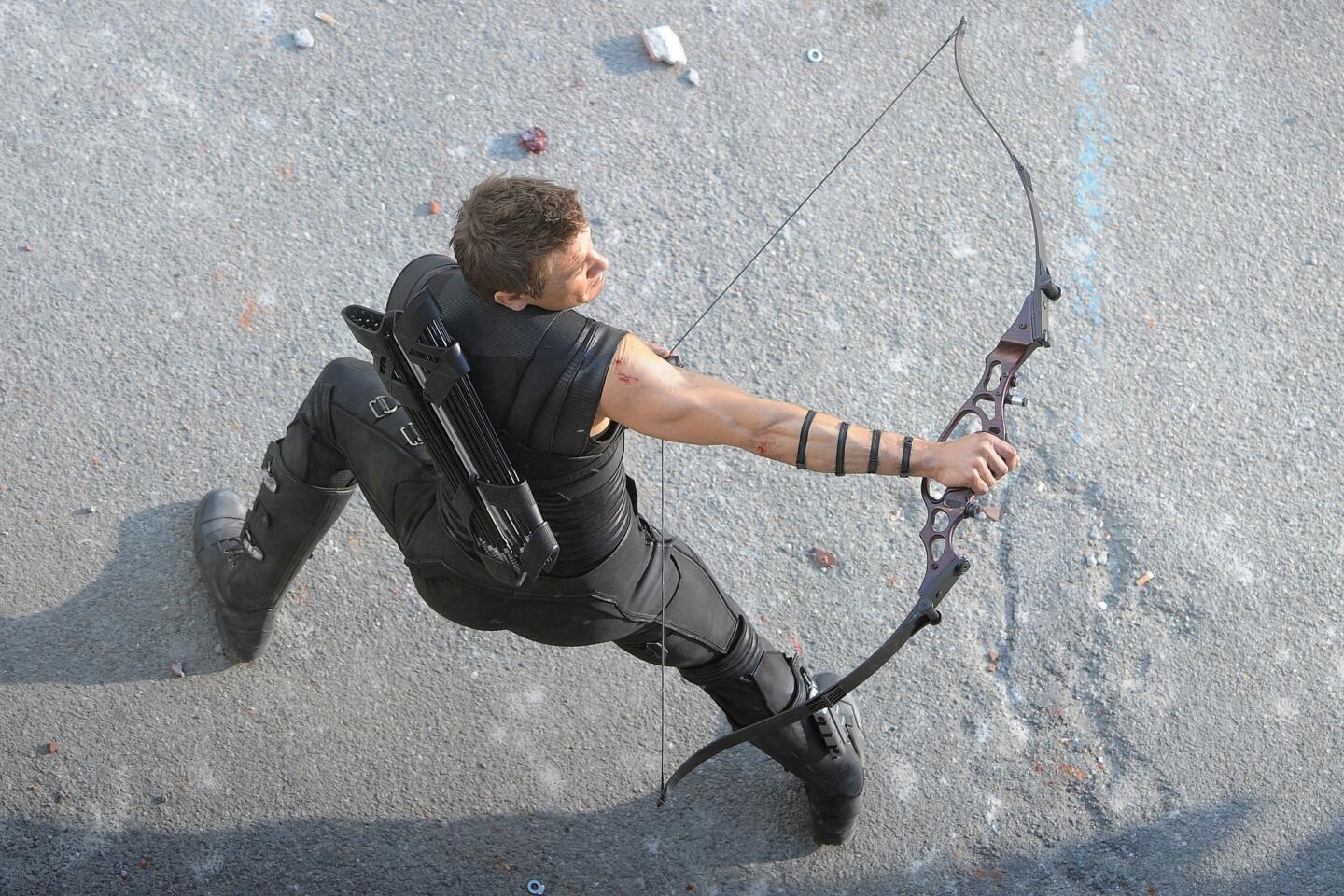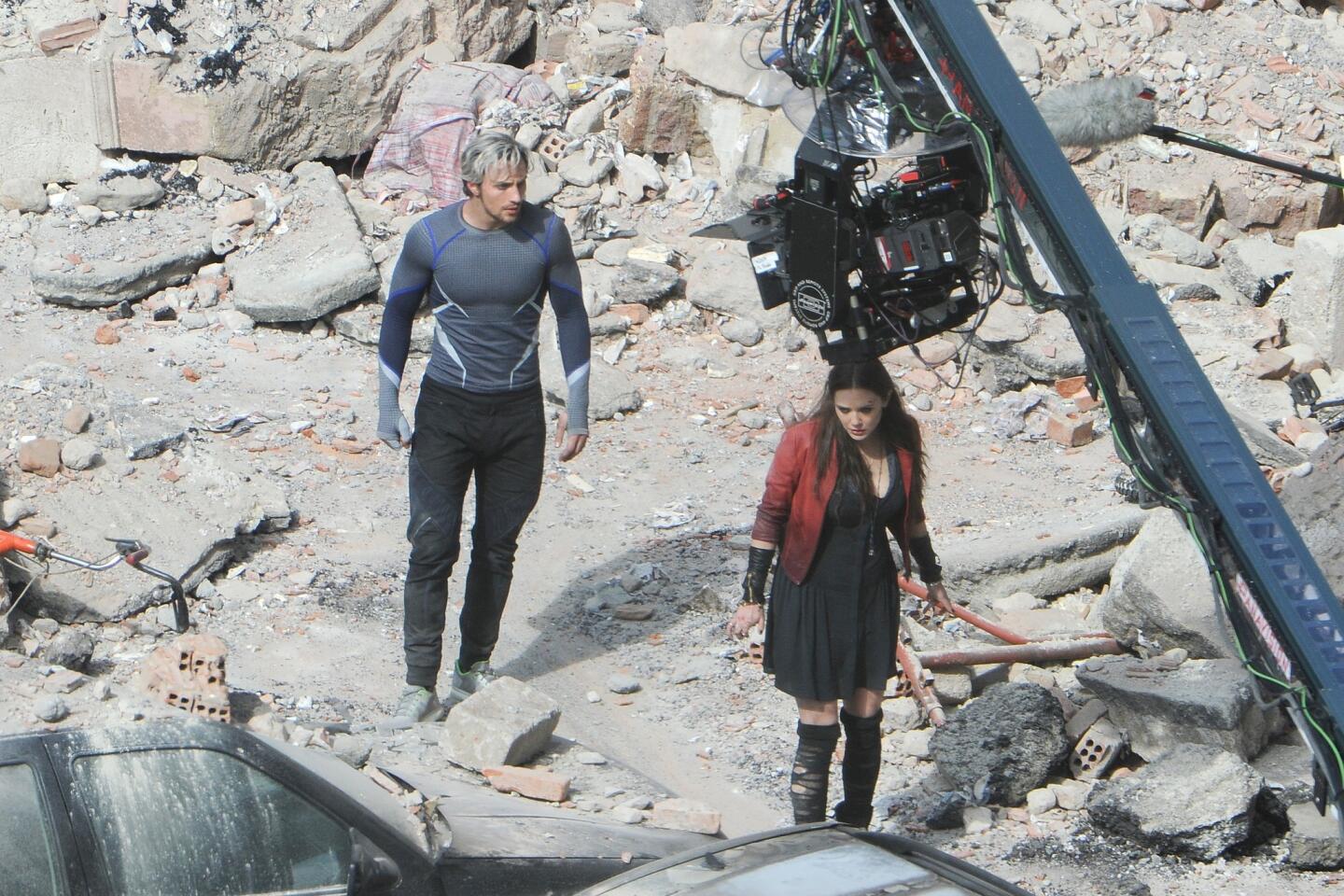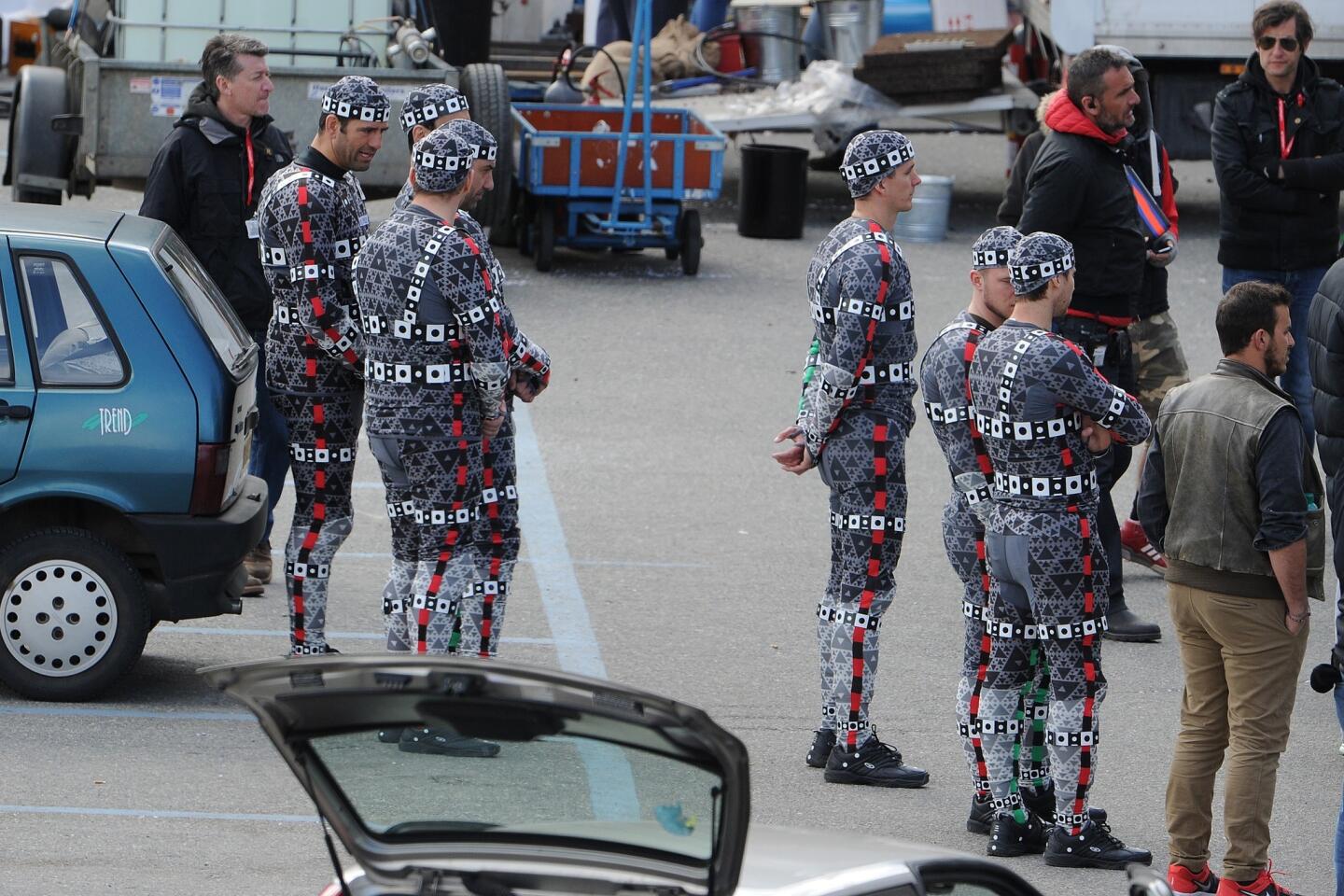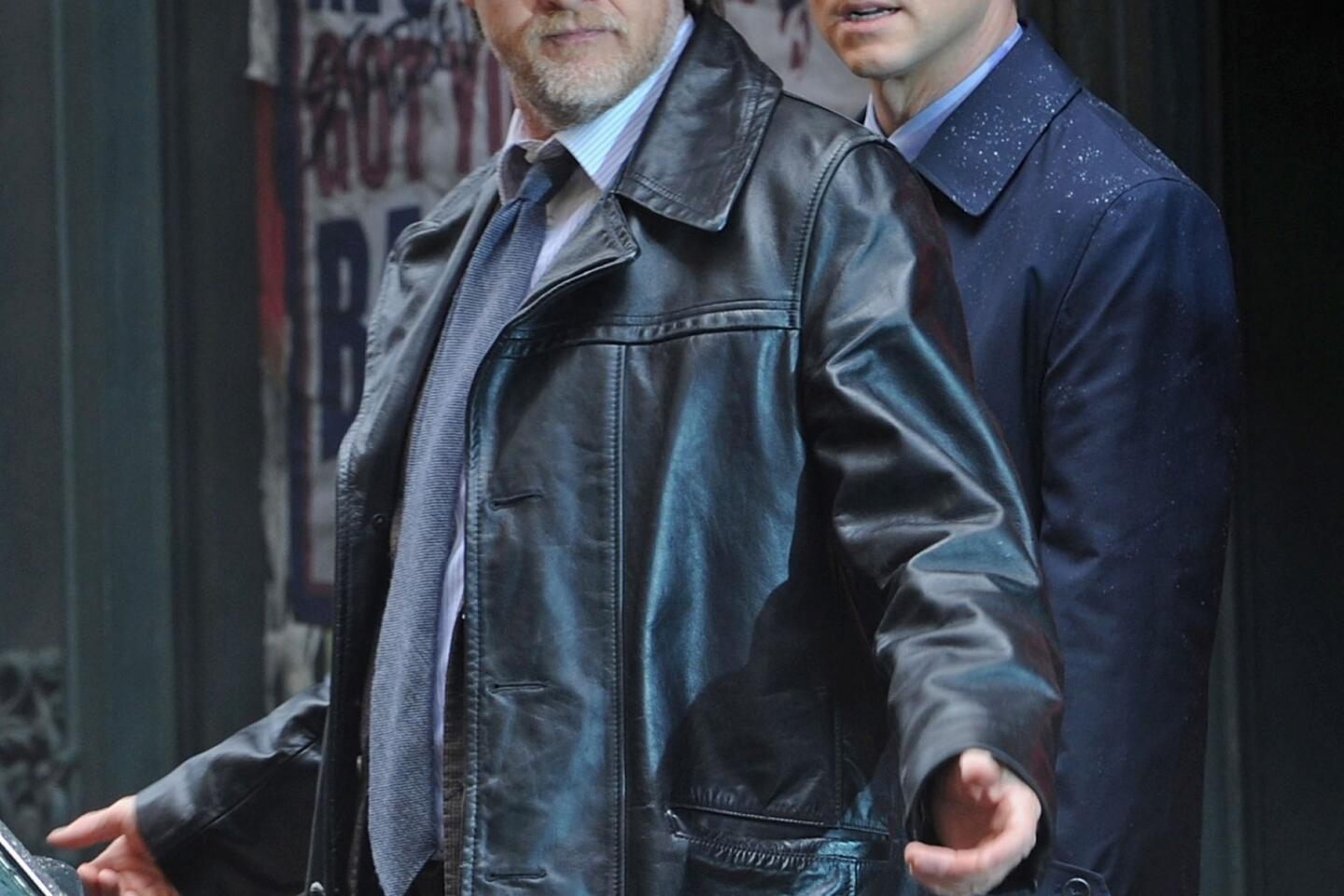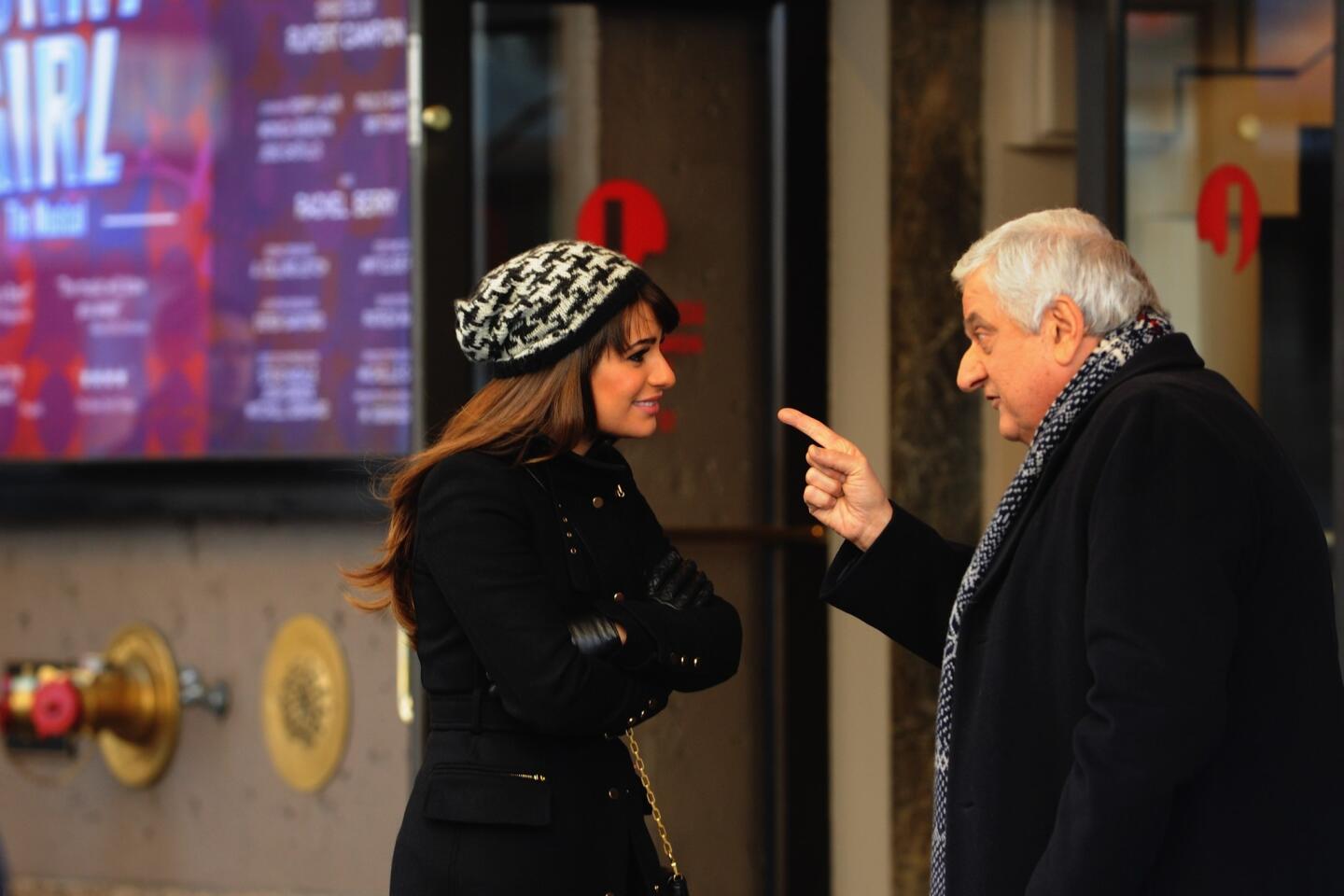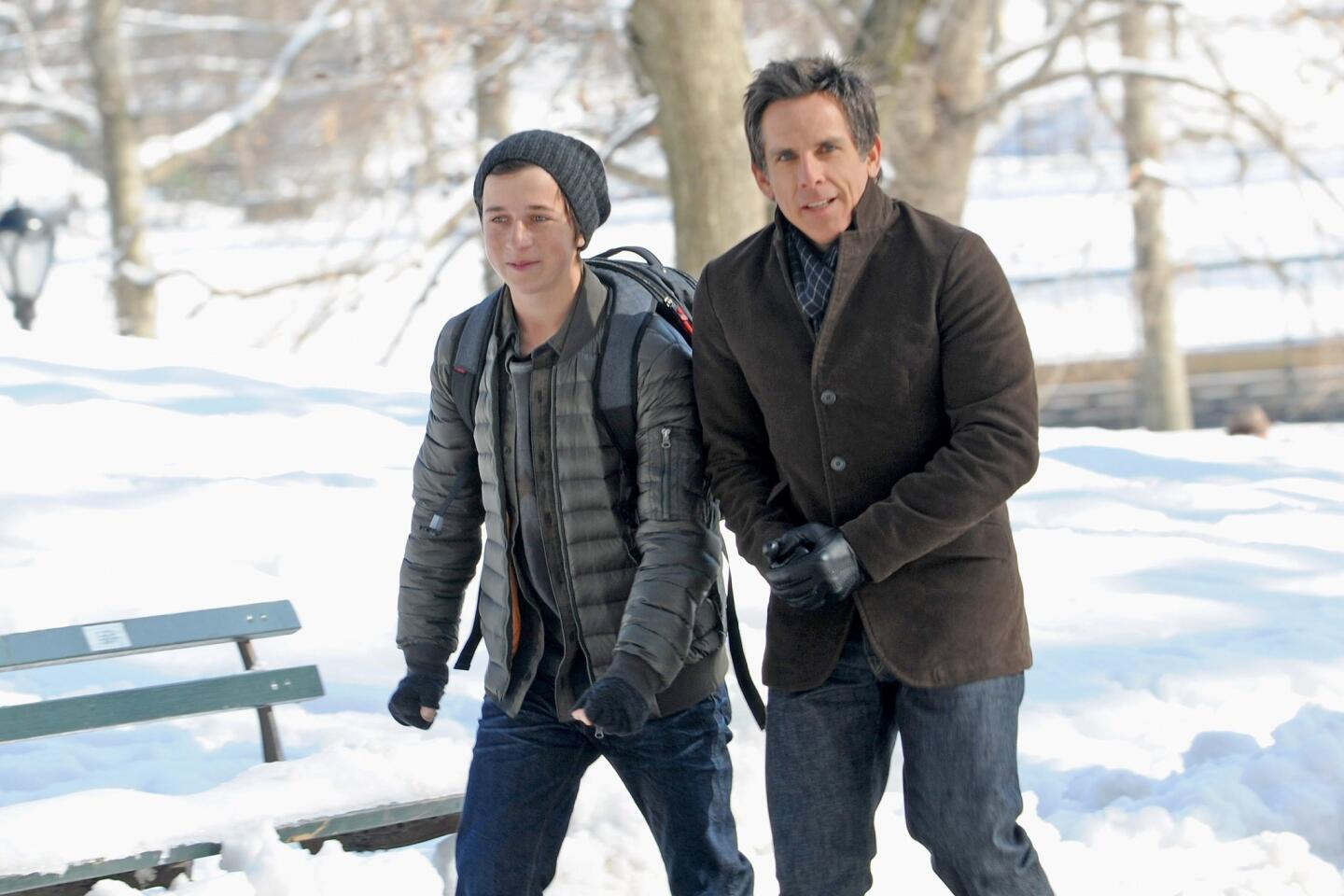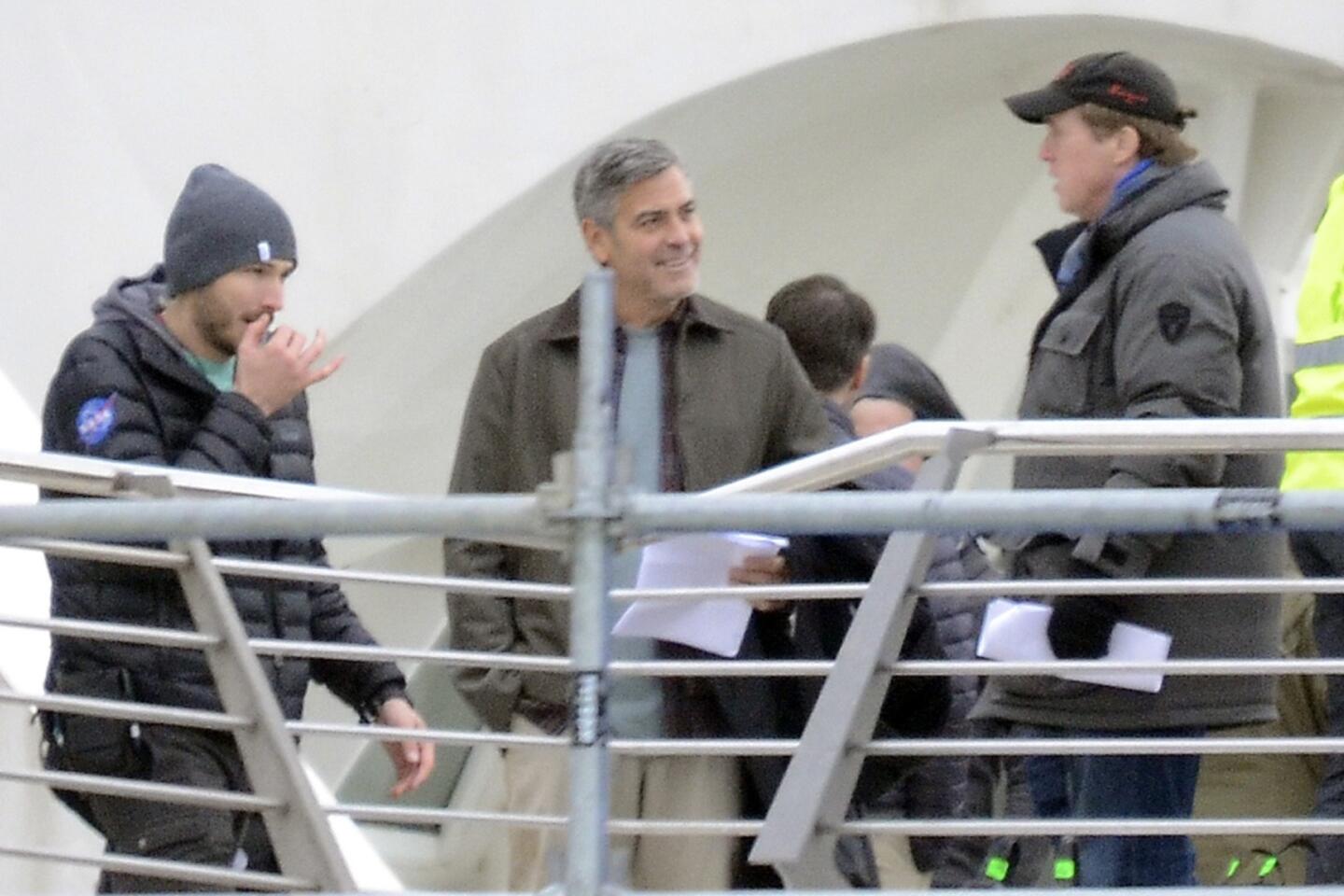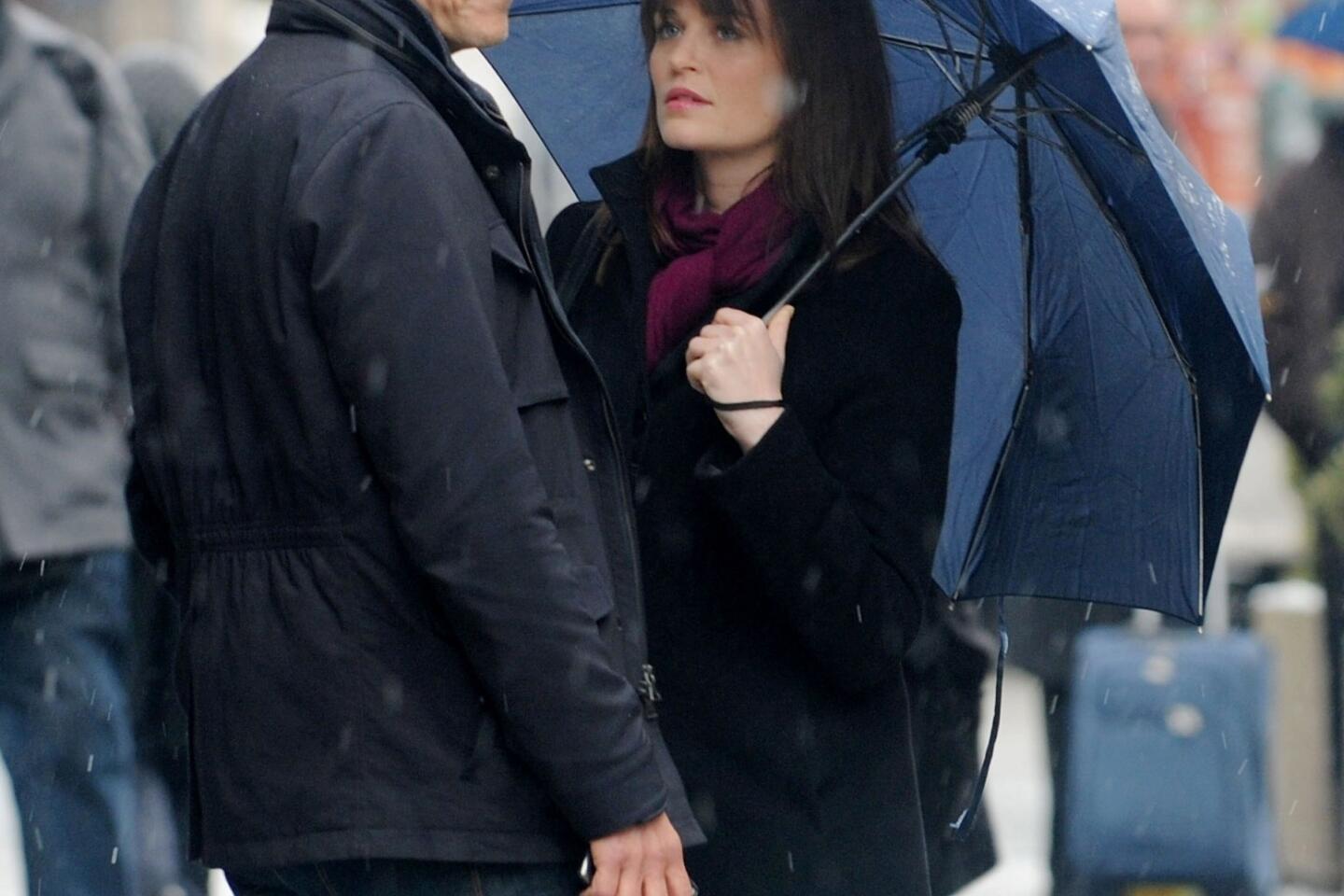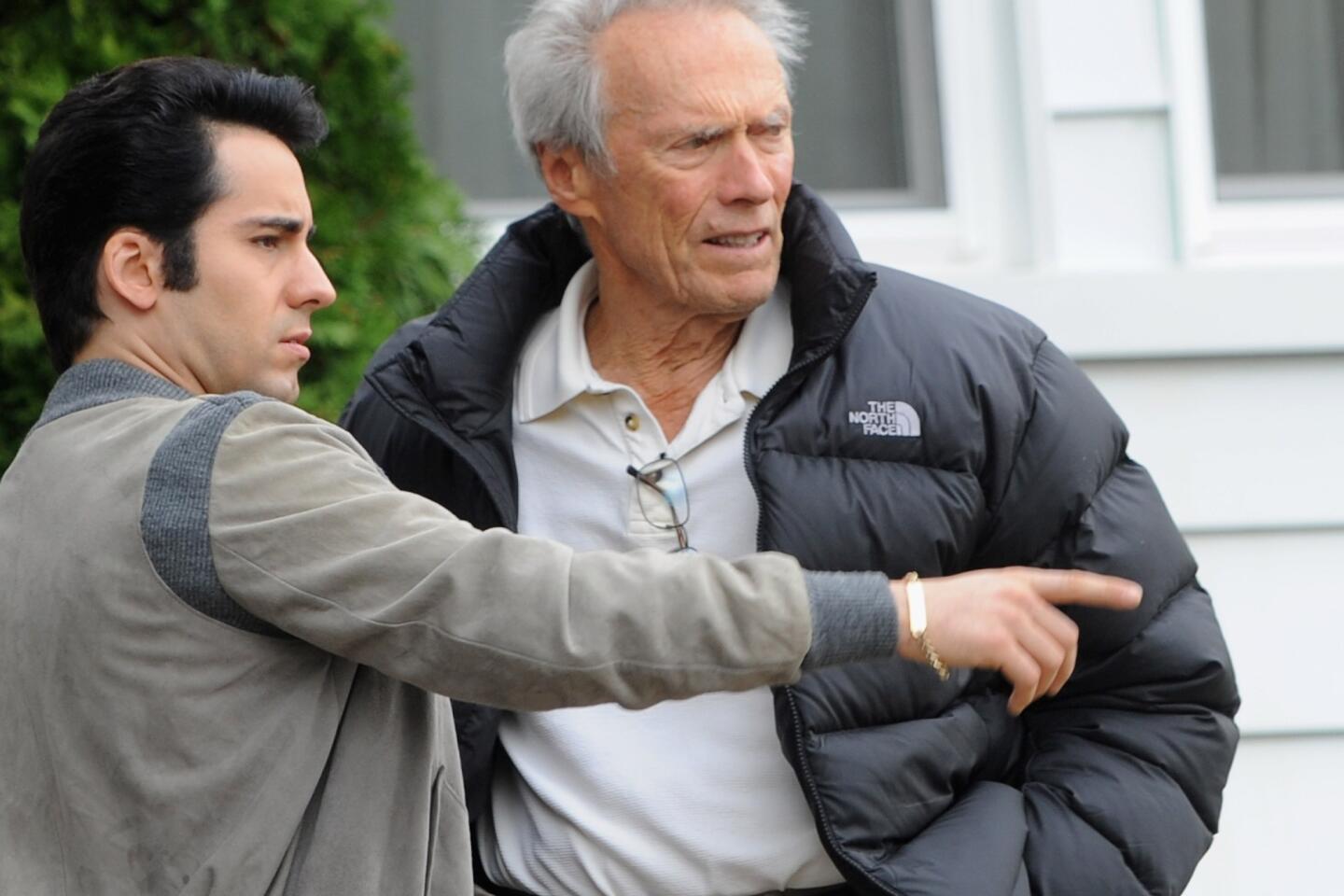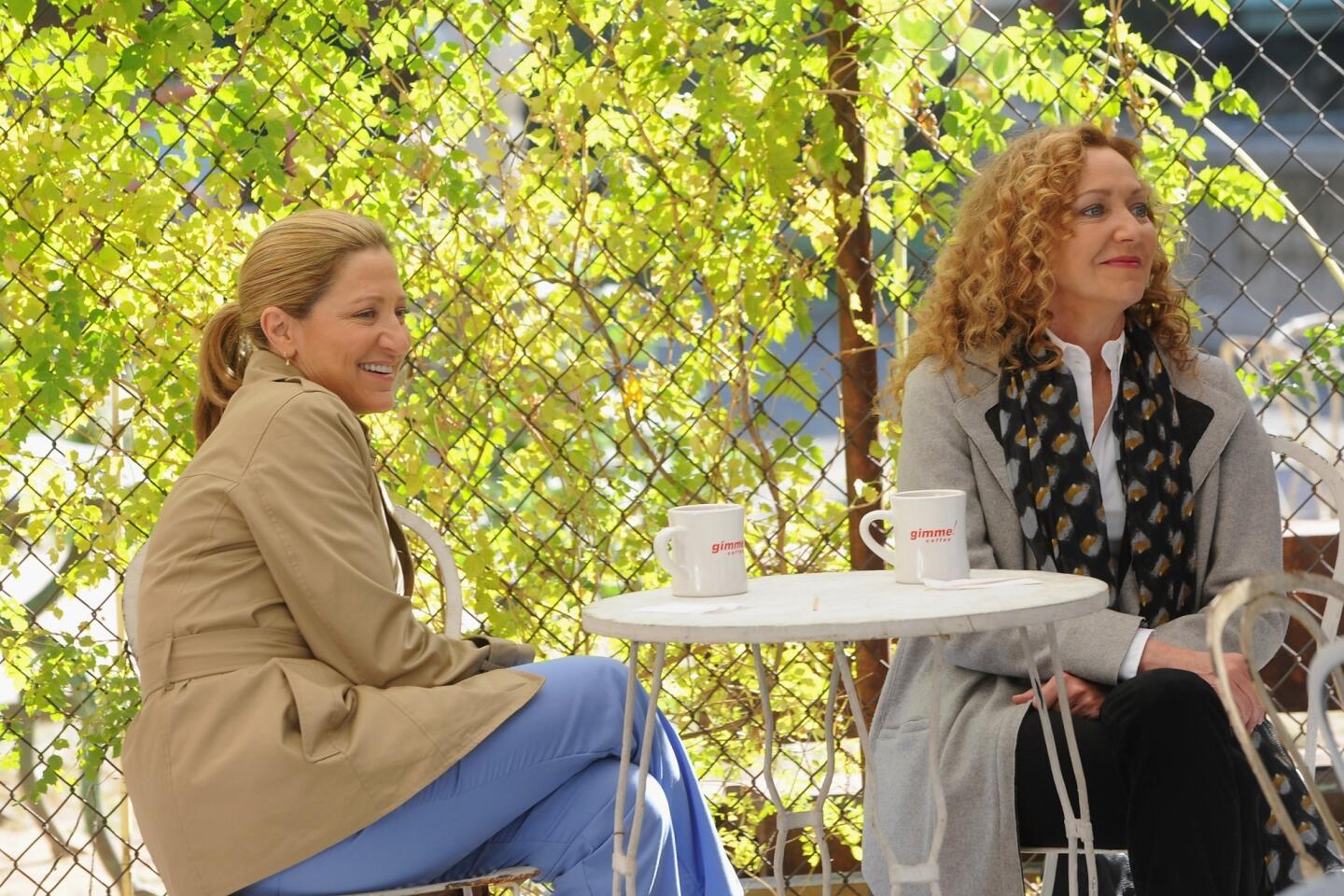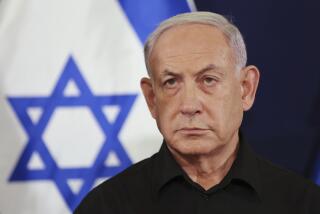So far, there’s nothing revolutionary about Al Jazeera America
Fires may rage and the U.N. roil, but let’s scratch one hot-button concern off the national agenda: Al Jazeera America will not be overthrowing the American way of life any time soon.
During its first week on air, even with a news cycle heavy on Syria, none of the reporting or anchor-desk chatter promoted the cause of the Muslim Brotherhood or blamed American foreign policy for the region’s unrest. The many female anchors and correspondents were not forced to cover their heads and most of the reporters were either American or BBC-European. (Love those accents!)
But if Al Jazeera America is not the airwave infiltration by a proselytizing enemy many feared it would be, neither is it the solution to American journalism it seems to think it is. At least not yet.
INTERACTIVE: Alternative TV shows to watch over Labor Day weekend
Kicking off last week with an hour-long introductory promo in which the network’s high-profile journalists explained how they were now going to do TV news the right way, Al Jazeera America swore it would provide a rich and informative alternative to all those other slick, sound-bite-addicted and politically biased news networks.
Unfortunately, that promo was the best hour of television Al Jazeera America has put on the air so far.
The two evening showcase programs — “America Tonight” with Joie Chen and “Consider This,” hosted by Antonio Mora — come closest to realizing the network’s aspirations, which look very similar to those of “Frontline” and other PBS in-depth news coverage.
During the first week, each show proved how refreshing and rewarding it can be to see a topic given as many as 30 minutes of air time with journalists who are smart, informed and engaged in the conversation rather than forcing it to hit time-determined talking points.
It also proved how long 30 minutes can seem if the reporting gets repetitive or the guests run out of things to say.
Al Jazeera America’s refusal to go hyper and slick is its big selling point. But there is a difference between hyper and energetic, between slick and polished. Sheila MacVicar, reporting on Syria, quickly emerged as a potential network star, but in general, the news programming, anchored in the evening by John Seigenthaler, did not differ in any meaningful way from other networks except in its regrettable tendency toward technical difficulties.
PHOTOS: Hollywood Backlot moments
Blurry footage, glitchy sound, suddenly black screens and sloppily framed correspondents plagued virtually every program during the first week. Uninspired sets and amateurish graphics flattened the daytime news; the half-hour “Fault Lines” not only relied almost entirely on talking heads, it often put those heads in front of preposterously dull backdrops.
Across the board, producers struggled to find the sweet spot between “thorough” and “enough already.” Interviews rambled only to be cut off mid-sentence, film footage sometimes appeared barely edited and far too many experts seemed uncomfortable in front of the camera; certainly many looked like they had been thrust in front of the camera without benefit of a comb, much less a stylist.
Forget slick, Al Jazeera America, we’ll settle for groomed.
It’s a new network, yes, but the raggedness of the coverage fuels the more worrisome suspicion that in their desire to bring old-fashioned, hard-hitting journalism back to television, the executives and producers are taking a too-literal read of “old-fashioned.”
Good graphics are not silly, they’re smart. More important, in a visual medium, they are necessary.
Relying on Skype conversations during the social-media driven daytime hour “The Stream” may have sounded good in a meeting, but Skype barely works for personal conversations. On television, unless the person involved is describing a dramatic real-time event, it looks absurd.
More can be more, but not always. On a recent “America Tonight,” an in-depth look at Britain’s vote against intervening in Syria was fascinating, but a trip to Detroit ran minutes too long and was followed by a trip to New Orleans. Honestly, how many American-cities-in-crisis stories can a person handle in a single hour?
Indeed, in its quest to return to TV news’ statelier past, Al Jazeera seemed to be choosing topics that, though earnest and solid, rang undeniably retro.
There were several “Shame of Our Prisons”-like reports hooked to the hunger strike in California, a story about nuclear waste, a report out of Haiti and a series following attempts by former gang members to clean up the streets of Chicago.
“The Stream” held a digital debate about creationism just as nutty as you might assume it would be and “Consider This” hosted a heated conversation about circumcision (which did not advance the eternal debate even with Mora’s queasy observation that the circumcisions he had witnessed did not appear to hurt the babies all that much).
Starting a television network is a perilous proposition, even for those with positive name recognition (Al Gore) or an enormous built-in fan base (Oprah Winfrey). Al Jazeera America faces a unique double-decker challenge: Before it can establish its name as a brand, it has to overcome its name as a brand.
The decision to pitch the network with an emphasis on national, rather than international, coverage may have seemed necessary — no shifty-eyed foreign agendas here, folks, we have a bureau in Nashville! — but it also undercuts the news organization’s most marketable resource, the very reason many Americans wanted an Al Jazeera station in the first place.
The preponderance of ads for AARP-geared spa systems and the Nation during the first week of broadcast was not accidental. The non-Arabic folks who actually want to watch a network with an Arabic name may be a bit taken back by a shortage of HD footage but they do not need the kind of nationalistic reassurance the network has been offering. Specializing in international news, particularly in the perpetually incendiary Middle East, should not be considered a drawback.
Because despite the Fox News-led shift toward personality-driven news, there is plenty of objective, in-depth coverage of the prison system and nuclear waste and even Haiti already, on “Frontline,” “60 Minutes” and the wonderful documentaries being shown on virtually every network including ESPN. Problem is, not enough people watch them. Which is why the news networks have stockpiled bells and whistles, developed multi-platform stars and brands (Anderson Cooper Outerwear, your time has come) that viewers now complain overshadow the actual news.
Unlike the government-funded BBC, so often held up as a gold standard, American news networks need to draw eyeballs to get the dollars required to report any news.
The early ratings for Al Jazeera America have been, not surprisingly, laughably low, in the double-digit thousands. Backed by the royal family of Qatar, the network has said it does not have to worry so much about ratings. But it does have to achieve relevance — people like Chen and Soledad O’Brien are not going to stick around if it doesn’t — which it can do only if people are actually watching.
As the first week turned into the second, the pace picked up a bit. The video wall that had seemed stuck on Standard Screen Saver offered some horrifyingly beautiful footage of the Rim fire that has spread into Yosemite and the devastation in Syria; “America Tonight” did a terrific and exclusive feature on the Afghan forces that will be taking over from the U.S. military and Mora intercut his multi-pronged look at Syria with an overly earnest but interesting conversation about Miley Cyrus at the Video Music Awards. (Memo to journalists everywhere: Sheepishly admitting you don’t know what twerking is does not make you look smart.) The fast-food workers’ strike prompted a well-choreographed series of pieces on virtually every show, including “Real Money With Ali Velshi” (the network’s top-rated program in early days.)
And though there was no reference to the infant Prince George, there was at least one story about Britain’s potentially pregnant panda. Because no matter how hard-hitting a network wants to be, you gotta bring the pandas.
More to Read
The complete guide to home viewing
Get Screen Gab for everything about the TV shows and streaming movies everyone’s talking about.
You may occasionally receive promotional content from the Los Angeles Times.
